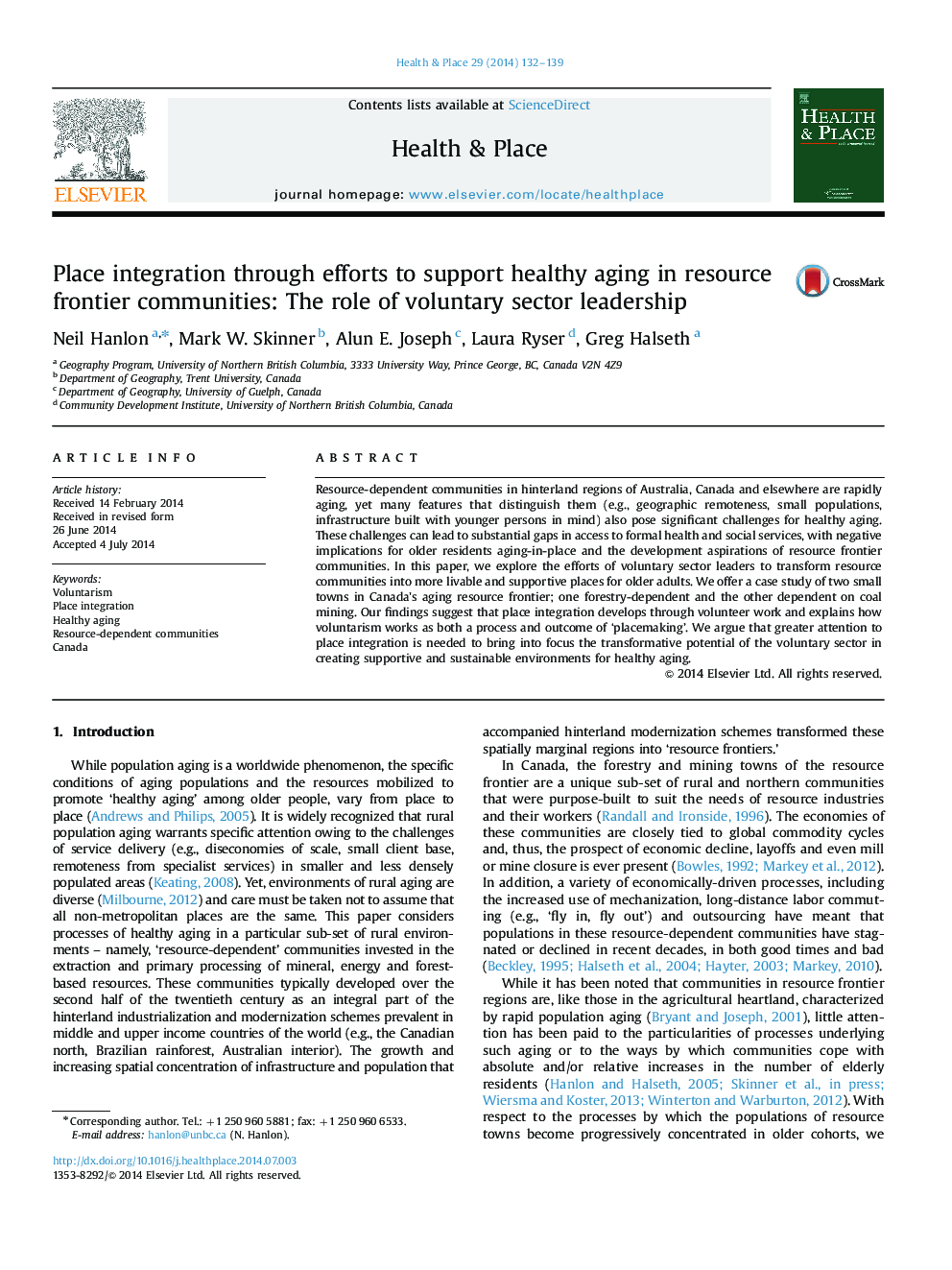| Article ID | Journal | Published Year | Pages | File Type |
|---|---|---|---|---|
| 7458473 | Health & Place | 2014 | 8 Pages |
Abstract
Resource-dependent communities in hinterland regions of Australia, Canada and elsewhere are rapidly aging, yet many features that distinguish them (e.g., geographic remoteness, small populations, infrastructure built with younger persons in mind) also pose significant challenges for healthy aging. These challenges can lead to substantial gaps in access to formal health and social services, with negative implications for older residents aging-in-place and the development aspirations of resource frontier communities. In this paper, we explore the efforts of voluntary sector leaders to transform resource communities into more livable and supportive places for older adults. We offer a case study of two small towns in Canada׳s aging resource frontier; one forestry-dependent and the other dependent on coal mining. Our findings suggest that place integration develops through volunteer work and explains how voluntarism works as both a process and outcome of 'placemaking'. We argue that greater attention to place integration is needed to bring into focus the transformative potential of the voluntary sector in creating supportive and sustainable environments for healthy aging.
Keywords
Related Topics
Health Sciences
Medicine and Dentistry
Public Health and Health Policy
Authors
Neil Hanlon, Mark W. Skinner, Alun E. Joseph, Laura Ryser, Greg Halseth,
